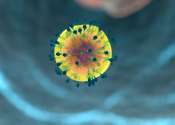Chimeras offer a new way to study childhood cancers in mice
In a new paper published March 5 in the journal Cell Stem Cell, researchers in Whitehead Institute Member Rudolph Jaenisch's lab introduce a new way to model human neuroblastoma tumors in mice using chimeras—in this case, ...
Mar 6, 2020
1
165







